https://www.youtube.com/watch?v=OqnMnRRKxJw
How To Solve The 4x4 Rubik’s Cube (Edge Pairing)
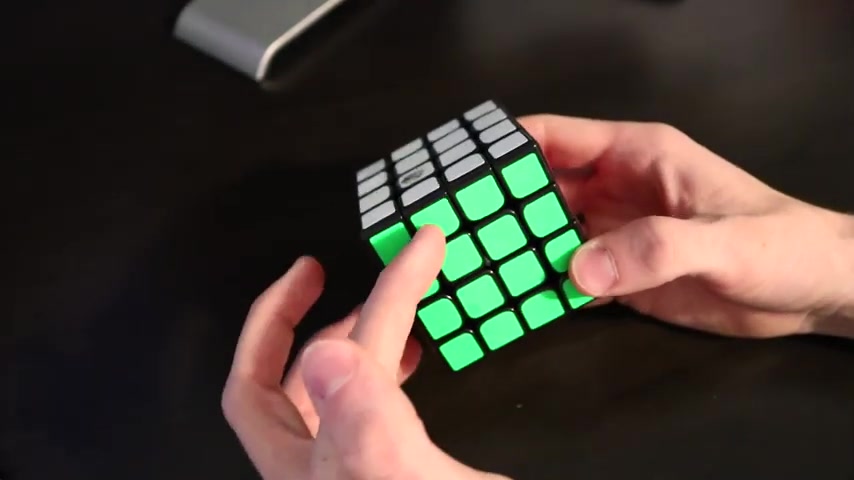
Hey guys , what is the Rubik's life here ?
Welcome back from the video today .
I'm gonna teach you how to solve the edges on the four by four .
Now , I did a video a couple of years ago about how to solve the centerpieces .
And you guys really liked that .
And you guys were asking me uh recently if I could make edge pieces and it's not that difficult .
It's very intuitive and just takes a little bit of practice and time .
Now I'm not an expert on four by four .
However , I am pretty good at doing the edge pieces in the centers and I can do that um in a decent amount of time .
So I'm gonna go ahead and uh scramble this cube up and then show you what to do .
Excuse my computer .
Let me turn that off .
Ok ?
So now that it's scrambled first things first is solve the centers .
So I'm gonna go ahead and do my best and not take forever .
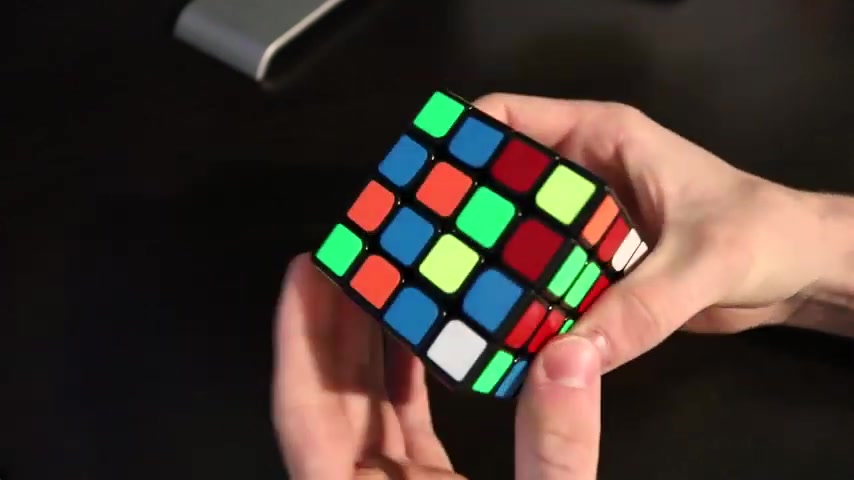
And I'm gonna go ahead and solve the white side and then flip it over , install the yellow side .
And if you guys haven't seen this video on how to fill the centers , uh it'll be linked at the end of this video and the end card so you guys can just go click on that .
Um Now I'm going to do this real quick and I'll be right back and teach you guys how to solve the edge pieces .
Alrighty .
So now I have my edge pieces and it's very er my centerpieces and it's very , very important that you orient them the correct way .
So you have white , blue , red , green and orange and yellow , of course .
And if you don't know the color scheme , you could just take out another Rubik's cube and this is the gas 3 56 air .
Um You can just go ahead and check them and make sure you have all the colors the correct way because if you have them the wrong way , then you won't be able to solve uh the first three layers and that'll mess you up and you have to do it all over again .
So make sure you aren't them the correct way .
OK .
So the next step is finding two edge pieces that look the same .
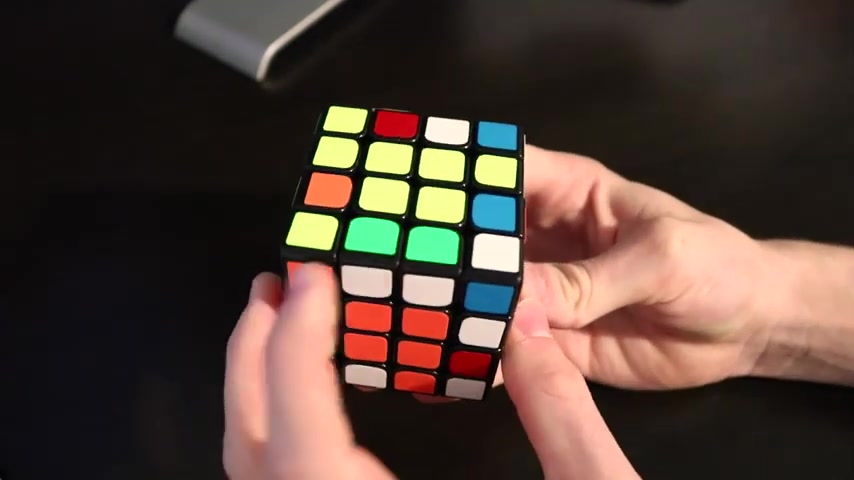
So there's two pieces of every single color .
For example , there's two pieces that are gonna be white and green like that .
Now , our job is to pair them all up and make them look like this .
So that way they're paired up and just formed in a one edge piece because the way we solve the four by four is we solve it basically like a three by three .
Where on this cube right here , there's only one edge piece .
And when we solve it , we solve the white layer and then the middle layer , then the top layer .
And on here , what we're gonna do is we're gonna solve uh all the uh edge pieces to make it so where we can solve the white cross and then just do F 20 pairs and then do OO LP LL .
And basically what we're trying to do right now is find two pieces that are exactly the same and learn how to pair them up .
So the first pair that I see is this one , I see red and white and red and white .
What you wanna do is put them on the same face .
So in this case , I can just turn it down like this .
So now I have them on the same face .
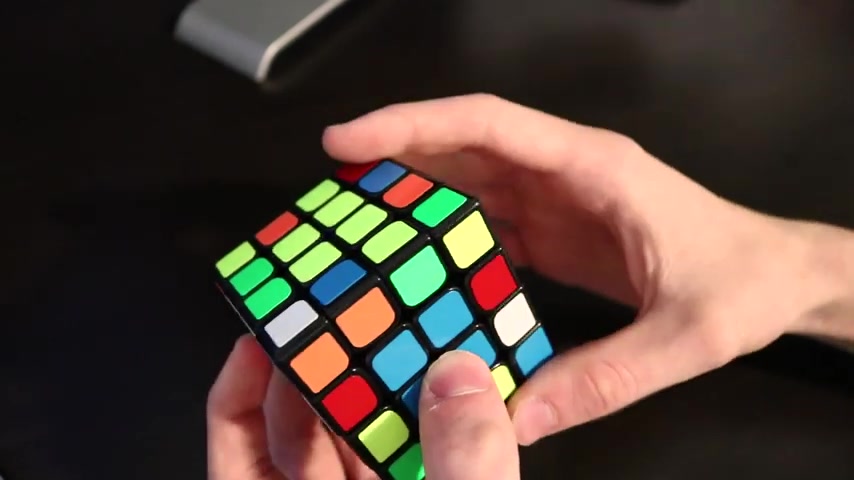
And what you wanna do is you're gonna want to pair them up .
So they're touching each other , you're gonna put it up into the top layer and replace it with a broken uh edge layer like this .
So I'm just gonna do this and I'll explain it in just a second .
So what I'm gonna do is I'm going to turn this piece like this .
So now my pairs are matching together and then I'm gonna replace it with a broken piece .
So if I put this up in the top layer replace it with a piece that doesn't matter .
And I'll put this back down and then you need to fix your centers .
And the reason we use a broken piece is because if we put our uh already together piece in the way , whenever we fix the centers , it would break that up .
So this way it doesn't matter .
And now we have this piece and this piece again , it's very , very intuitive and I'm just gonna do a couple more just because this will take a very , very long time if I go through and explain every single one , but I'll try to do another one .
So we have a blue and white and blue and white down here like this .
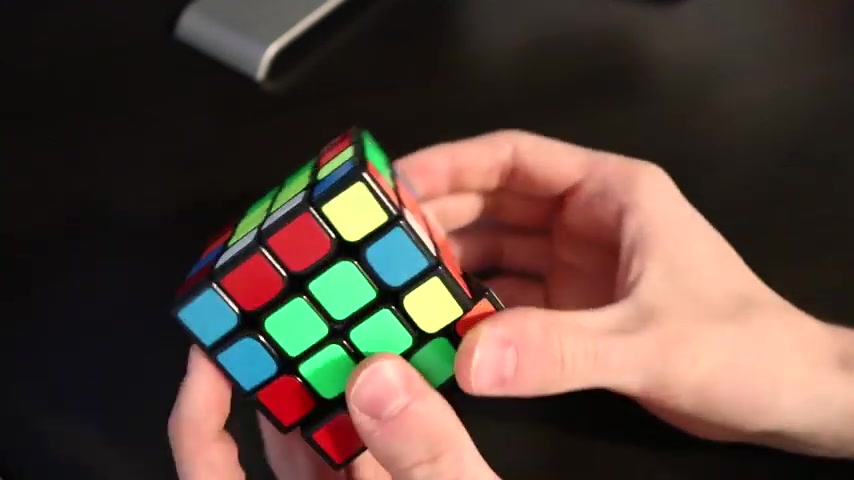
Now , what I can do is if you bring it up to the same layer , you can see now they're back to back and you can't turn it .
So that way they are matching .
So in this case , what you wanna do is you wanna turn this two times to put it in the back like that .
And then you can , now it's back here and now you can bring it up and turn it twice to match these pieces up .
And then you're gonna try to replace it with one of these pieces .
So if you put this in the front and you can move this up out of the way you can turn this broken piece into its place like this , bring it back and then fix your edge pieces and now we have three of them .
OK ?
So now we have these two , I saw the white and orange and the white and orange .
Now what you can do again because these are two that are facing each other .
You can do R two which will put it in the back and then pair them up .
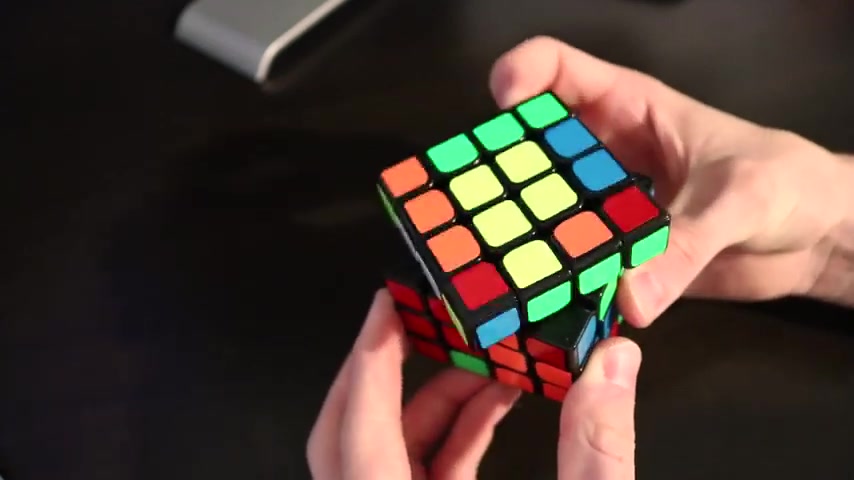
Make sure you have a broken edge piece in the top , replace it and put it back like that .
Now that we have four that are already matched up and it does not matter which ones you pair up .
I just happen to do the white ones because it's as easy as to see .
Uh Now that you have all four in the top , you could just turn the cube in a different orientation because now this is a full side and you can either just move another broken piece into the top or you can just flip it over and that's easier to do .
And you don't have to think as hard uh in order to do that .
So what I'm gonna do is I'm gonna try to find another piece .
So for example , this green and red piece and this green and red piece right here .
So what you can do is you can turn this piece down and then you can see there together .
So you need to rotate this one to the back like this and now it's in the top , you're gonna turn this top layer twice to pair them up , replace it with a broken edge piece and put it back down .

And I'm gonna do all of the rest of them and then I'm gonna show you this algorithm because you might get parody and I'll explain what that is in a second .
So let me pair up all the rest of my regular edges just like this , replace it and put it back and I'm gonna do that for all of them until I get to the very , very last one .
OK .
So now I've got to the very last one where all of my edge pieces are paired up and now I just have two that are left over .
So I've got the green and orange , green and orange and then the er blue and orange and then I've got blue red , blue red .
However , even though they're matching and I flip them around , there's no broken piece for me to um to , for me to replace it with .
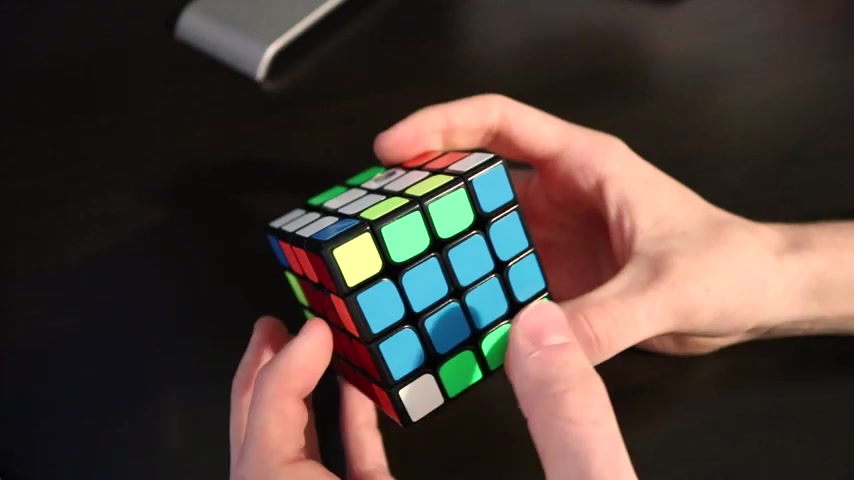
So these are the very last two and this is something that you're gonna have to do , which is called , it is a parody algorithm where you're gonna have to uh just switch this one with this one and this one with this one and it's not exactly parody but parody in the four by four is uh where it's a case that you can't solve using your three by three knowledge .
So for example , this wouldn't happen in three by three .
And this is just a new algorithm you're gonna have to learn .
And now I'm gonna put it up on screen and I'm gonna show you it's very , very simple .
But I'm just gonna walk you through this really quick and then this will solve all of your edges .
And another way you can see it is sometimes it's like this and um what you need to do is sometimes it'll be like this as well where they're opposite of each other .
And what you need to do is just turn it until they're on the same face and they're across from each other like this .
So that one's on the left and one's on the right .
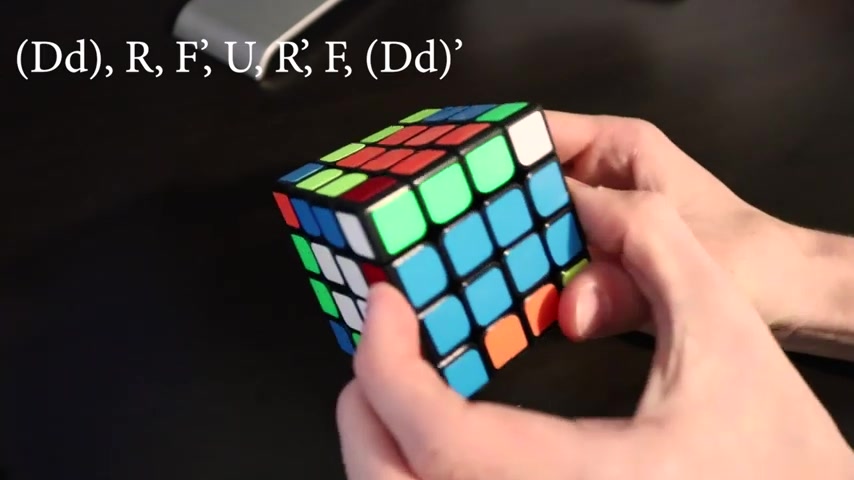
OK .
So what you need to do is hold your cube .
So it is horizontal .
So that way , it's not like this way and they're not opposite colors like this and they're not in this weird shape .
You need to make it turn it so that they're horizontal with each other and the same color is on the same side .
So like you can also do it like this where they're on the same face like that , you can do this as well .
So then there's red , red and orange and orange , it doesn't matter .
Um But for me , I like seeing the blue color because that's just , I don't know , blue is my favorite color .
So I'm gonna hold it like this and what you need to do is do this algorithm .
And then you're gonna see on screen how it says D and lower case D and whenever there's two letters together , uh that means you're gonna turn two of the layers , you're gonna do the , this D and this D , so both of the down layers and then you're gonna see capital R which is just this capital L which is this capital U all the regular stuff in capital F .
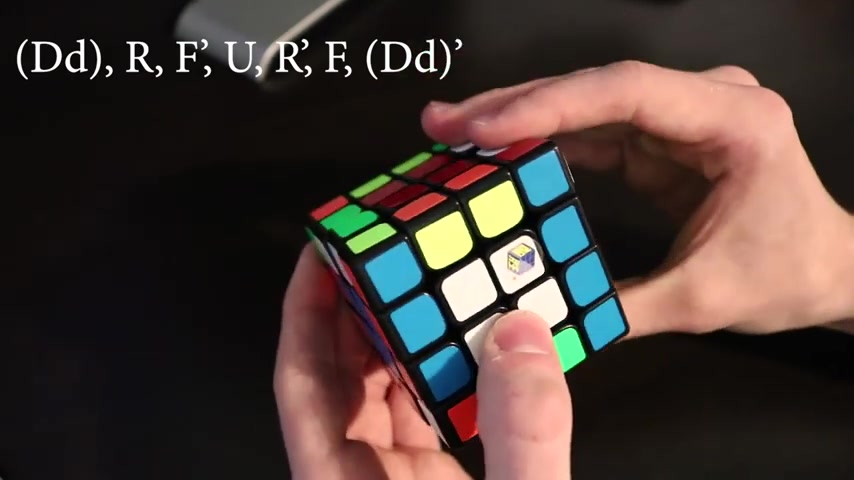
And then there's gonna be cases where it's like FF which is where you turn both of the layers or RR which is both of these or ll , it's pretty uh self-explanatory .
I want to get the hang of it .
But if there's two letters , that means that you're gonna turn both of the layers .
So starting off this algorithm , we're gonna do DD , which is this big chunk clockwise and then you're gonna do R and you're gonna do F prime than you , then R prime , then F and then the DD counter clockwise .
And as you can see that solved our edges , so once you have your edges solved , you're gonna go ahead and solve it like a three by three .
So you're gonna go ahead and make your White Cross like this and like this and like that .
And now we have the white cross and then you can solve it .
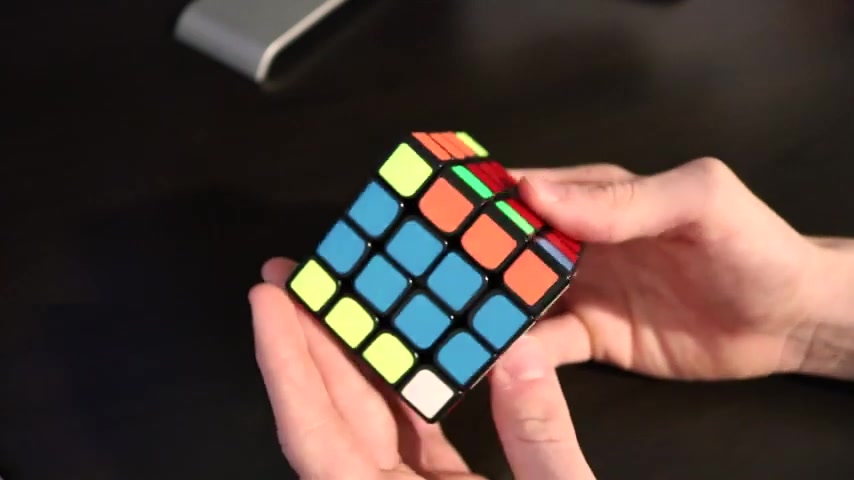
However you want to , whether you know beginner's method or C five , I'm gonna solve it with F two L pairs because that's just quicker .
So what I'm gonna do is I'm gonna go ahead and solve an F two L pair like this .
And then I see these back here , which you can go like that .
And then I see the blue and red .
It's basically just like solving a three by three .
So make sure you know how to do that first because one that is much , much easier and into that'll let you solve the first three layers .
So now quickly I'm gonna show you uh how to solve the last layer , my camera does not want to focus .
So there we go .
Now , usually you would have a parody which is where there's an edge piece flipped or there's a case where you can't get it .
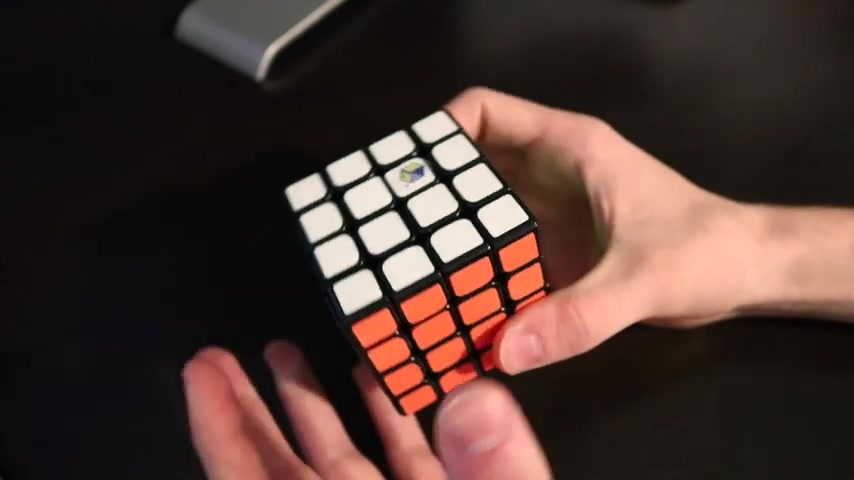
But in this case , we're perfectly fine and you can go ahead and just do your regular OLL algorithm to solve the top and then you can just go like this , do your regular PLL , which I did the wrong one of course .
And that will solve your four by four .
Now , in some cases , you're gonna have it where the edge pieces are flipped and they're gonna be oriented the wrong way .
But I will make another video in the future about how to solve the last layer .
So I know this is a quick and brief tutorial , but it's pretty self explanatory and you just need to take some time to practice and learn .
There's only two cases and then that final uh case for the last two edges , but I hope you guys enjoy this video .
If you did , please leave a like down below .
I'm working on maybe doing some merch store like a sweatshirt or t-shirts uh for 10,000 subscribers .
If you guys want to see that , let me know in the description what you got or in the comment section , what you guys want to see .
But anyway , thank you guys very much for watching .
Uh Please like subscribe and share for more videos until next time guys .
Bye .
Are you looking for a way to reach a wider audience and get more views on your videos?
Our innovative video to text transcribing service can help you do just that.
We provide accurate transcriptions of your videos along with visual content that will help you attract new viewers and keep them engaged. Plus, our data analytics and ad campaign tools can help you monetize your content and maximize your revenue.
Let's partner up and take your video content to the next level!
Contact us today to learn more.